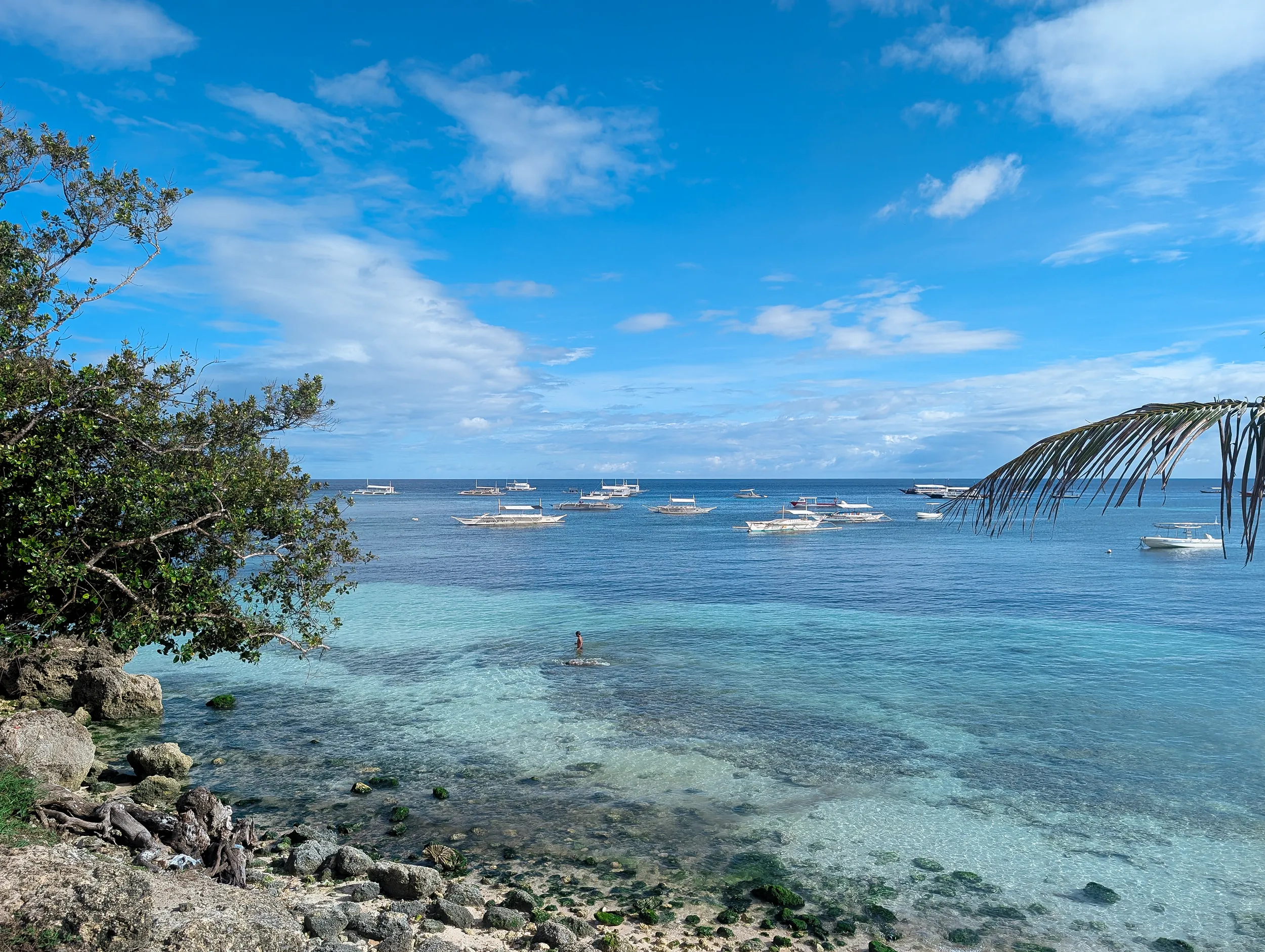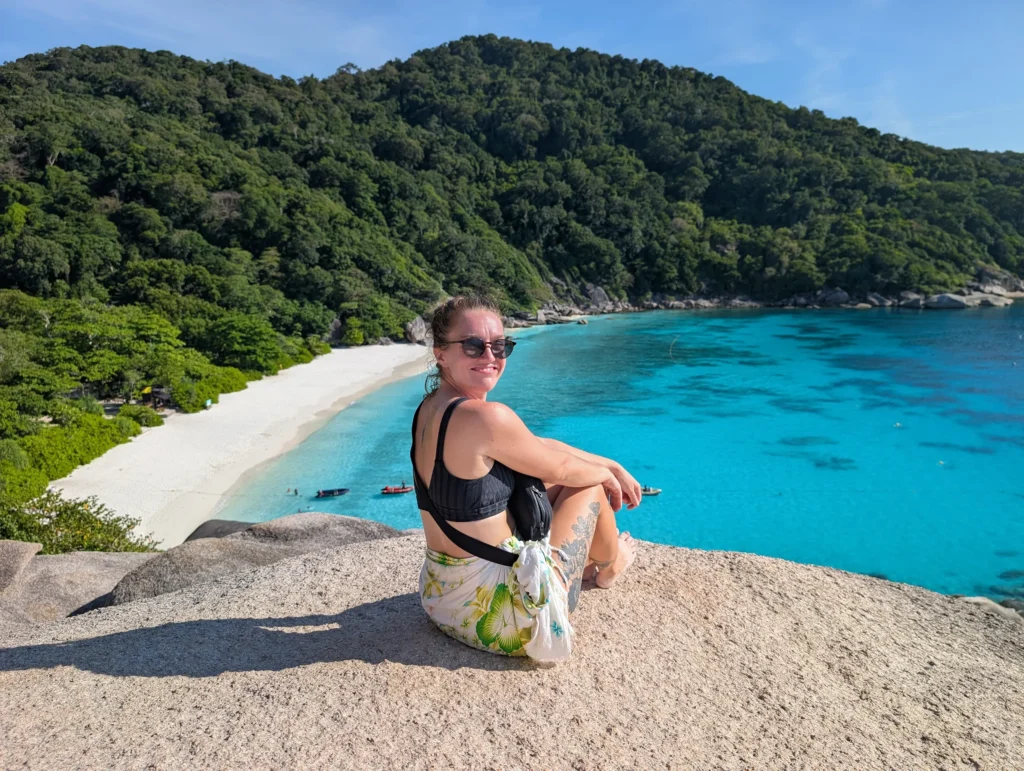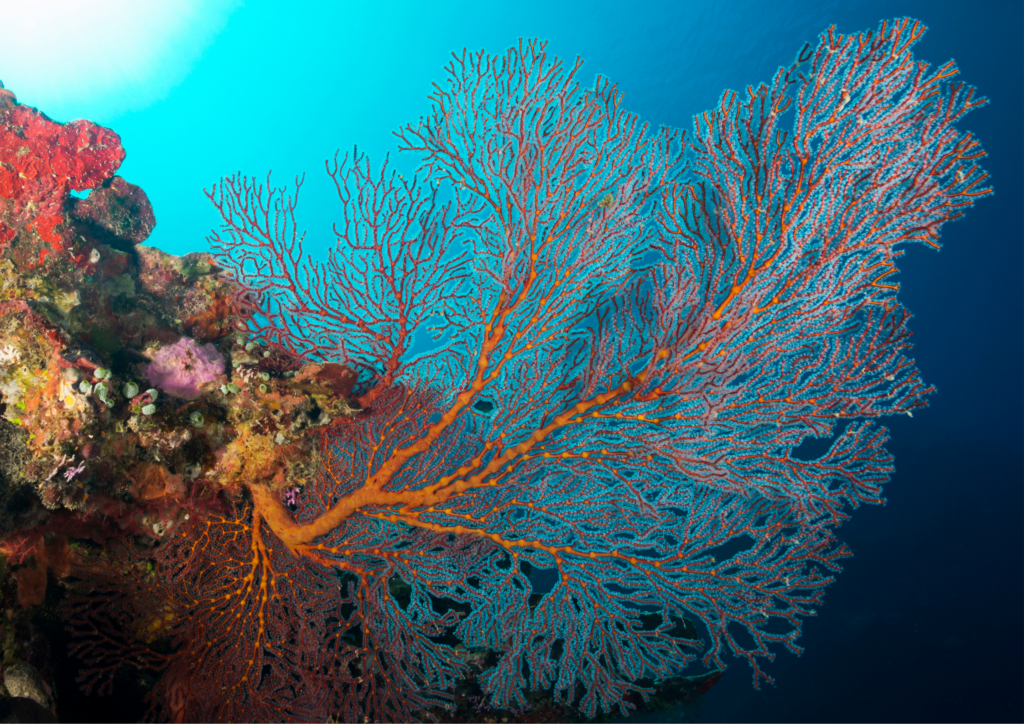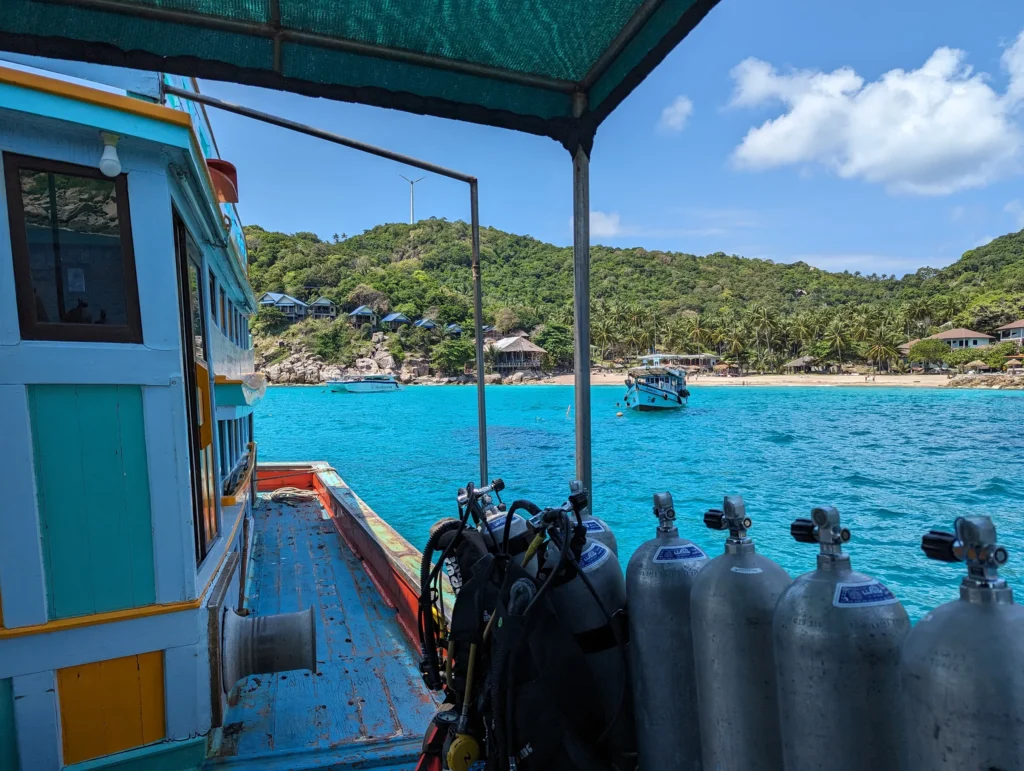In this post, I’m helping you plan your diving trip to Panglao, Bohol in the Philippines to dive the famous Balicasag and Pamilican Islands.
Since you’ve landed on this post, you’ve probably already heard about Balicasag and Pamilican Islands. These two small islands are located around Bohol in the Central Visayas region of the Philippines. They’re protected islands that have become a hotspot for divers from around the world.
And if you want to explore these two beautiful islands, you’ll want to start your journey in Panglao.
During my two and a half month trip to the Philippines, my husband and I ended up spending two weeks in Panglao, diving several sites around the island and taking day trips to both Balicasag and Pamilican Islands. Hopefully this guide will help you plan the perfect trip!
Justyn’s Quick Panglao Recommendations:
🏨 Stay: Pick a hotel that’s close to Alona Beach, without being so close that you’re surrounded by the chaos. I recommend Ana-As Apartelle.
🤿 Favorite dive sites: Black Forest & Diver’s Heaven at Balicasag and Arco Point off Panglao Island.
⭐️ Tours: Don’t miss out on exploring Bohol! Take a day to visit the Chocolate Hills and Tarsiers.
🇵🇭 Travel tip: Getting a sim card in the Philippines isn’t easy! Make sure to get connected fast with an eSim.
Please note: This post contains affiliate links, meaning I may earn a commission if you purchase by clicking a link (at no extra cost to you). Thank you for supporting my blog! This is the fastest, easiest way to support my lil travel bloggin’ dream. 🫶🏻
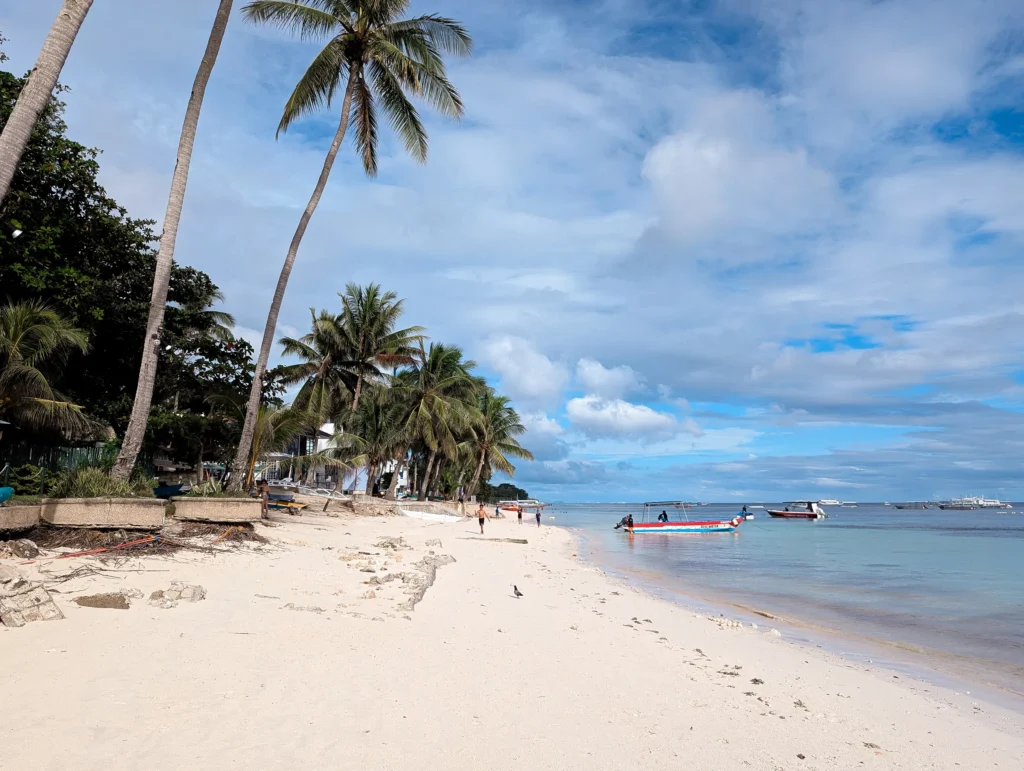
Everything You Need to Know About Diving in Panglao, Bohol
- What makes Panglao diving special
- The best time to dive in Panglao
- Balicasag, Pamlican and local dive sites (with dive logs!)
- Who to dive with in Panglao
- How much is Panglao scuba diving
- How to get to Panglao
- Where to stay in Panglao
- Travel tips for Panglao
- Other things to do in Panglao and Bohol
Where is Panglao?
First things first, where is Panglao?
As I mentioned before, Panglao is located in Bohol, in the Central Visayas. It’s actually a small island off the coast of Bohol – the 10th largest island in the Philippines. Panglao is connected to Bohol by a couple of bridges. It’s a great place to start your Philippines diving trip, because it also has an international airport.
From Panglao you can easily hop to other popular spots like Siquijor, Dauin, Cebu, Moalboal and more. It’s also a great spot to base yourself if you want to explore more of Bohol.
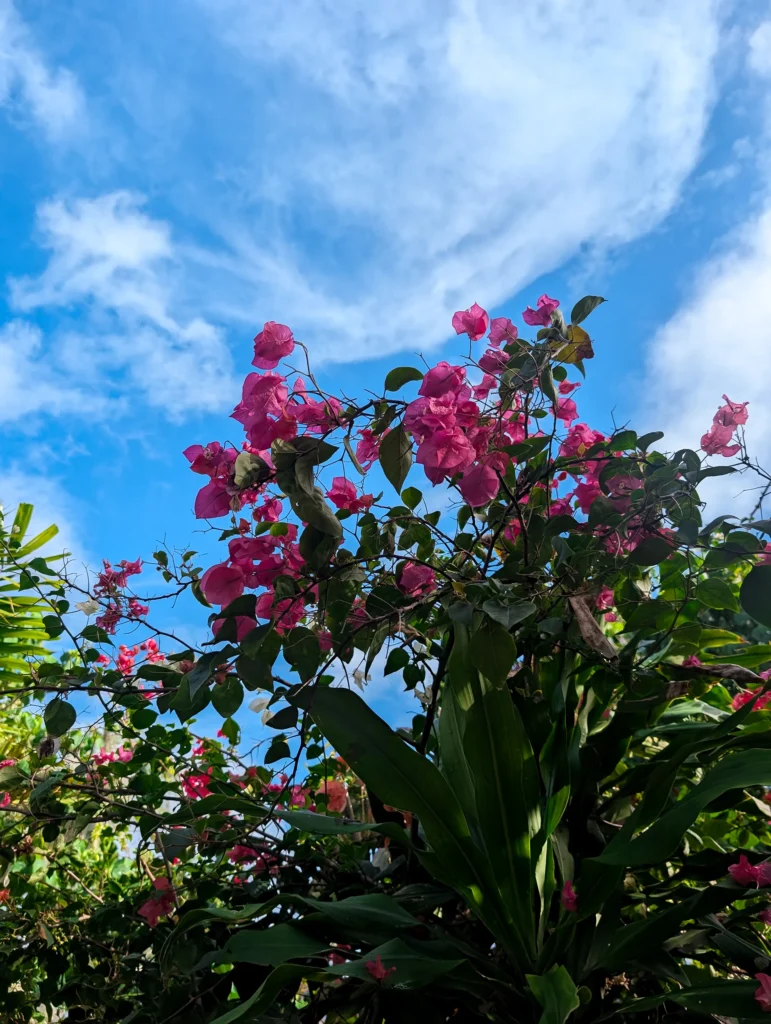
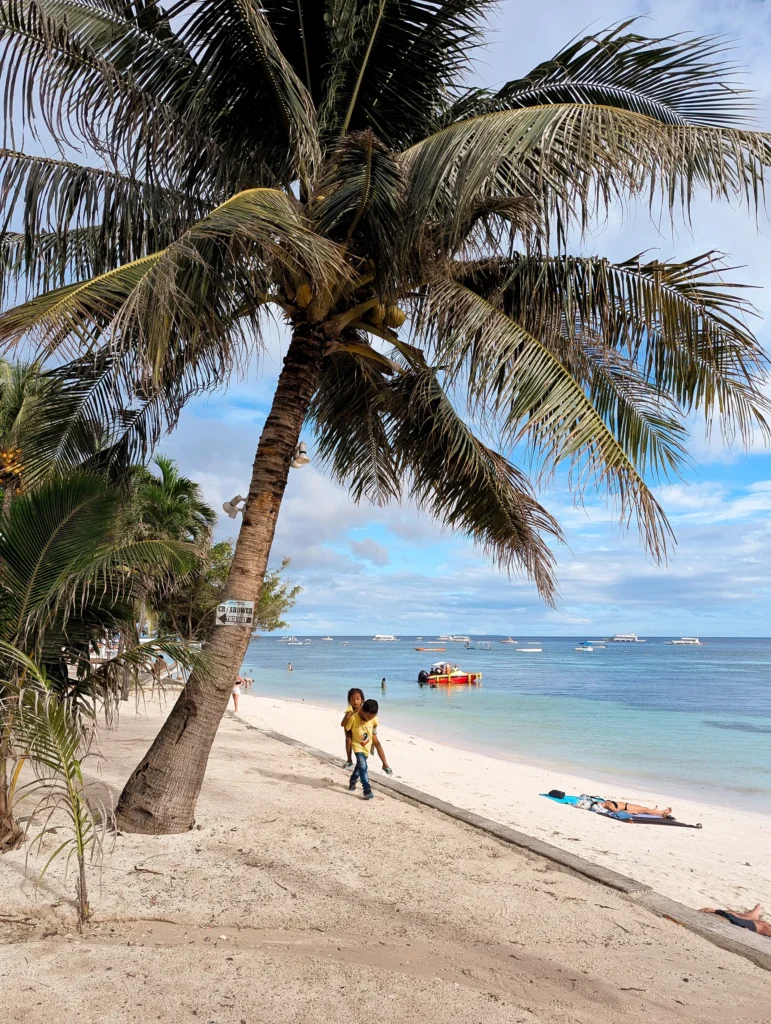
What makes Panglao diving special?
The island of Panglao is surrounded by beautiful coral reefs that you can reach by boat within minutes. I was so surprised by how close most of the diving was to the island. There’s great muck diving where you’ll see a variety of nudibranchs, frogfish, octopus and other critters.
While we loved several of the local dive sites around Panglao, it’s also your jumping off point for diving at the protected Balicasag island and beautiful Pamilican island.
Baliscasag is a perfectly round island located off the southwestern shore of Panglao. You can reach the island in about 45 minutes, by traditional banka. The island was protected as a marine sanctuary in 1985 and today they limit the number of divers that can visit per day, to continue efforts to protect the island.
Pamilican island is located south of Bohol and took us about an hour to reach on the dive boat. The dive sites here are different from Balicasag, but one thing remains the same – you will see a lot of sea turtles! When we visited it seemed less busy than Balicasag.
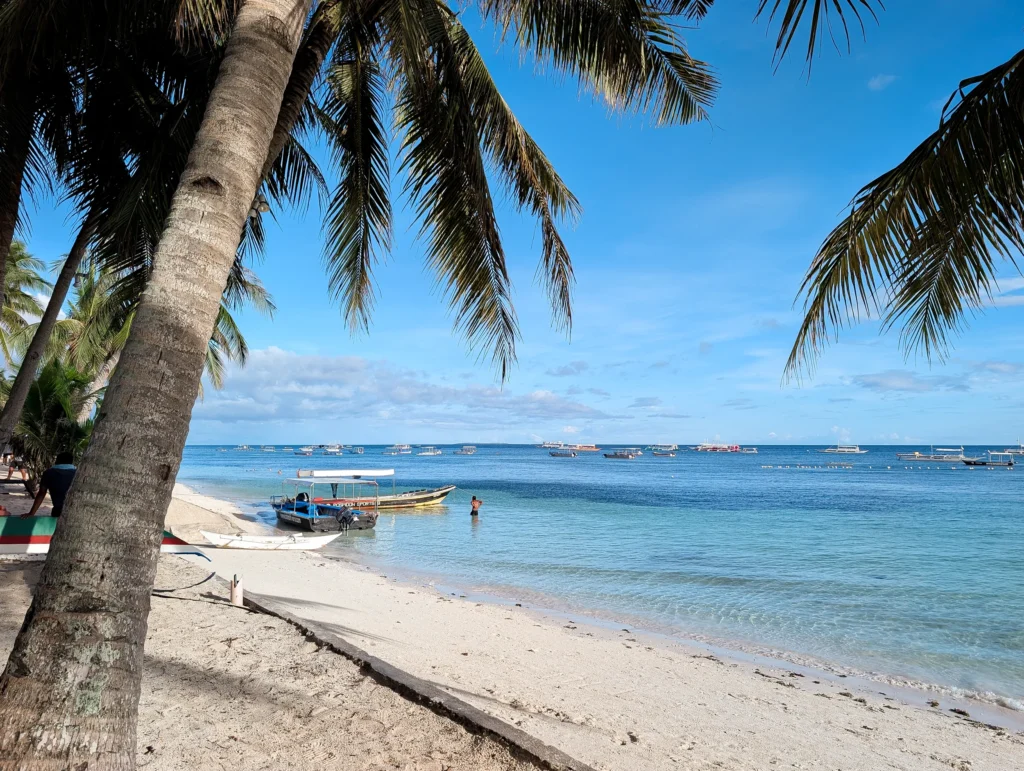
The best time to go diving in Panglao
The best time to dive in Panglao is during the dry season – December to April. We arrived at the end of December and had tropical rain almost every day, so I’m not sure what the actual rainy season must be like.
While it did rain a lot, the rain didn’t seem to affect the diving conditions. We still had good visibility and were able to visit all the dive sites without problem.
Panglao is a very busy diving destination, so if you’d like to go with fewer crowds, I would recommend a shoulder or off-season. This is definitely a destination you could dive year-round.
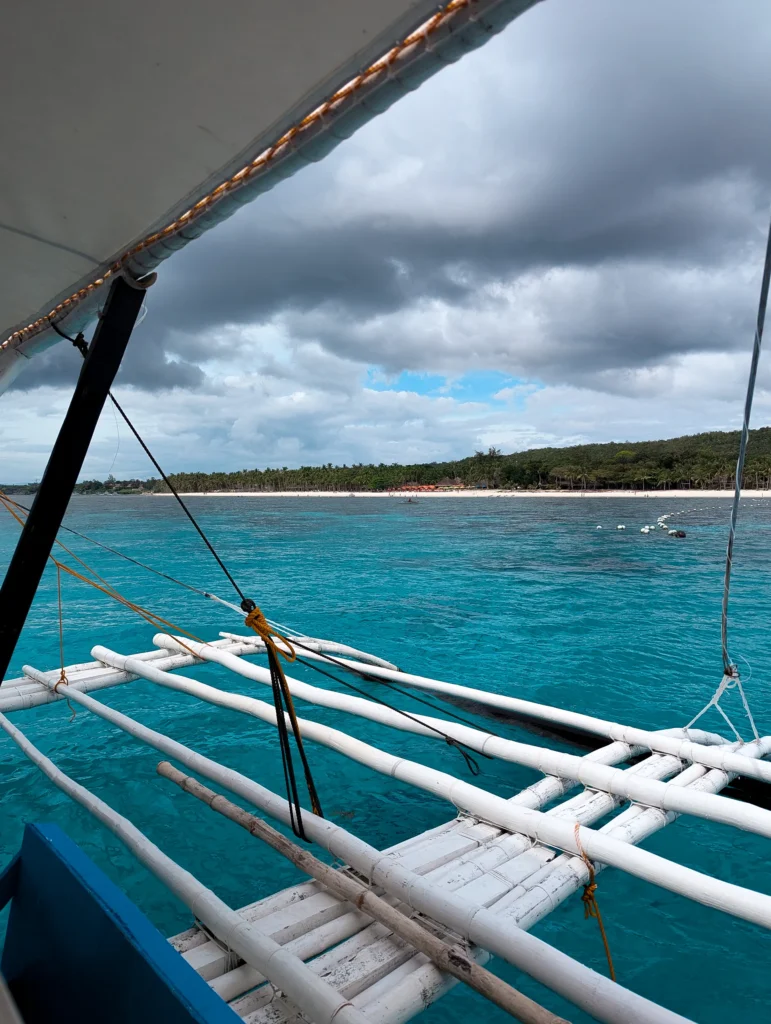
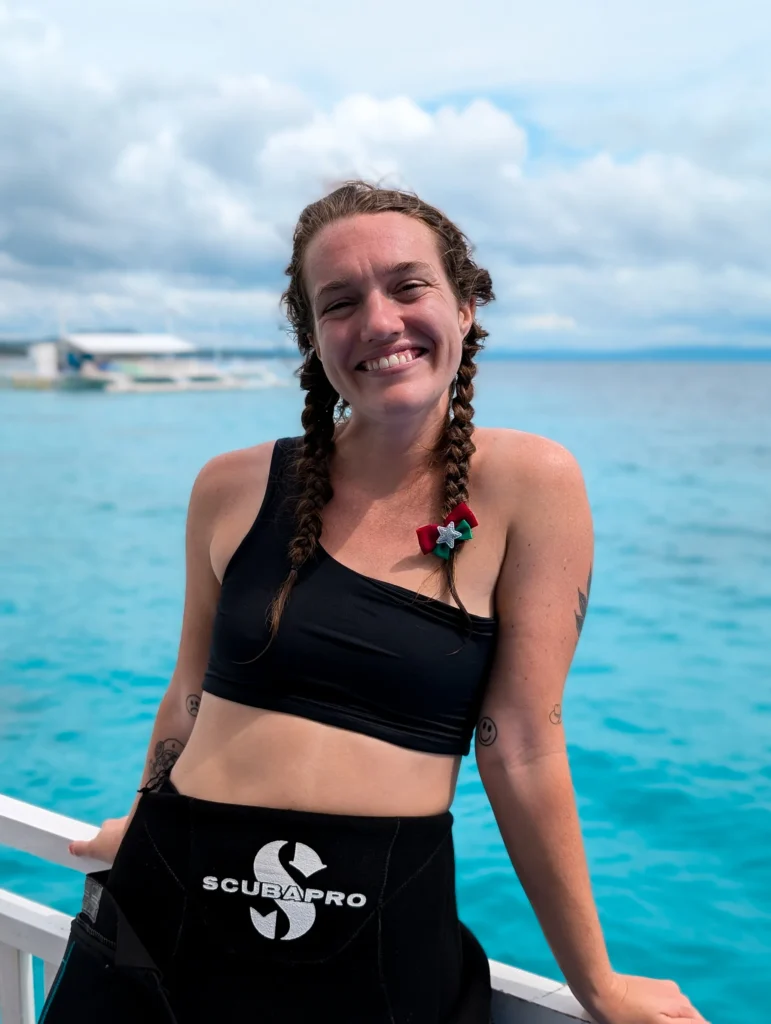
Balicasag, Pamlican and local dive sites (with dive logs!)
We did 11 dives with Haka in Panglao, two trips to Balicasag (however both times we did the same dive sites – which we were a little disappointed by.) We also did a day trip to Pamlican and 5 local sites.
The local dives were very easy with decent visibility. We had strong currents at both Pamilican and Balicasag islands – especially on our second day at Balicasag. I’ve gotten a lot more comfortable in currents, but be prepared if you don’t dive in currents often. There might be some quick drifts along the walls.
Dive Log: Balicasag Island
Dive Site: Diver’s Heaven
- Max Depth: 23 meters (average depth 14.6 meters)
- Dive Time: 50 minutes
- Sea Temperature: 28°C
- Visibility: 20 meters
Notes: Wall dive with a beautiful reef that drops into the blue. We spotted a huge frogfish!
Dive Site: Black Forest
- Max Depth: 20 meters (average depth 13.2 meters)
- Dive Time: 53 minutes
- Sea Temperature: 28°C
- Visibility: 20 meters
Notes: We started the dive on the coral – immediately spotted a sleeping baby white tip under a table coral. We saw squid, lots of turtles, nudis and a spotted boxfish. Large school of Big Mouth Mackerel at the end of the dive.
Dive Site: Diver’s Heaven (second trip)
- Max Depth: 20.5 meters (average depth 13.7 meters)
- Dive Time: 47 minutes
- Sea Temperature: 28°C
- Visibility: 20 meters
Notes: Very strong current on this dive at Diver’s Heaven. Didn’t spot much as we drifted along the wall. Quite exhilarating.
Dive Site: Black Forest (second trip)
- Max Depth: 20 meters (average depth 13.2 meters)
- Dive Time: 53 minutes
- Sea Temperature: 28°C
- Visibility: 20 meters
Notes: Dropped down and immediately spotted a turtle and yellow boxfish. The small current meant we didn’t need to swim much. We saw the small white tip reef sharks, morays and nudis.
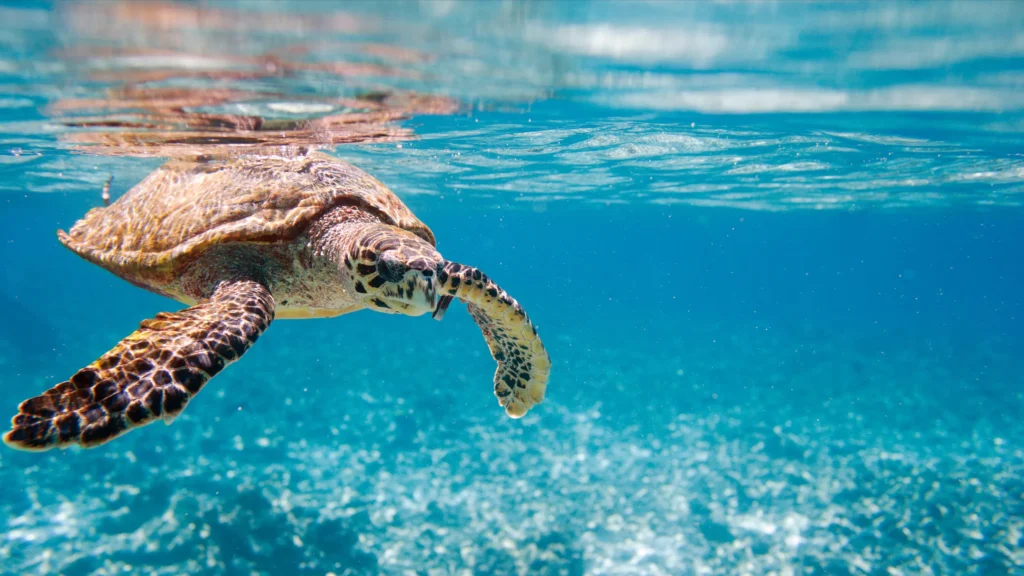
Dive Log: Pamilican Island
Dive Site: Dakit Dakit
- Max Depth: 22.7 meters (average depth 14.1 meters)
- Dive Time: 52 minutes
- Sea Temperature: 28°C
- Visibility: 15 meters
Notes: Drift dive along a sloping reef. Medium to strong current pulling us along. We spotted turtles, eels and lots of nudis.
Dive Site: Spanish Tower
- Max Depth: 21.6 meters (average depth 13.1 meters)
- Dive Time: 60 minutes
- Sea Temperature: 28°C
- Visibility: 10 meters
Notes: This was a wall and reef dive with lots of small caverns in the wall. We saw at least 10 green turtles, two octopus, a yellow boxfish and dragonfish.
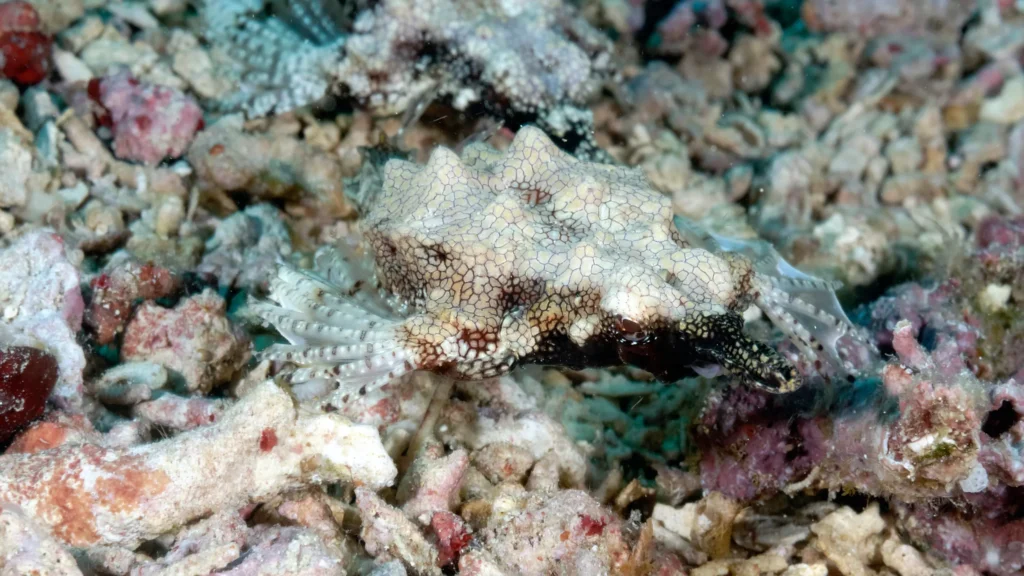
Canva Stock Image of a Pegasus or Dragonfish
Dive Log: Panglao Island
Dive Site: PPB/Haka House Reef
- Max Depth: 18.3 meters (average depth 12 meters)
- Dive Time: 61 minutes
- Sea Temperature: 28°C
- Visibility: 15 meters
Notes: We visited the artificial reef structures built by Haka (they have several floating reef structures). Otherwise this was a sandy slope dive, not the most interesting but we did see a free swimming white eel and Orangutans shrimp.
Dive Site: Danao Wall
- Max Depth: 20.5 meters (average depth 12.8 meters)
- Dive Time: 56 minutes
- Sea Temperature: 28°C
- Visibility: 15 meters
Notes: We saw several cowfish, the large school of big mouth Mackeral, two seahorses, a pipefish and a boxfish. Lots of turtles, nudis and eels at various points. This dive was a lot of fun – with everyone finding little critters to share with each other.
Dive Site: Garden Eel
- Max Depth: 22.4 meters (average depth 13.5 meters)
- Dive Time: 56 minutes
- Sea Temperature: 28°C
- Visibility: 10 meters
Notes: This was a shallow reef dive with nice corals. We spotted pipefish and a large black frogfish.
Dive Site: Arco Point
- Max Depth: 25.2 meters (average depth 13.6 meters)
- Dive Time: 61 minutes
- Sea Temperature: 28°C
- Visibility: 15 meters
Notes: My favorite of the local sites around Panglao. Wall dive with sandy bottom around 25 meters. Beautiful soft corals at 8 meters that looked beautiful with the sun shining on them. We drifted along to look for frogfish and spotted two (a white and black). We saw a banded sea snake, pipefish, translucent shrimp and an extremely tiny nudi (smaller than my pinky nail).
Dive Site: BBC
- Max Depth: 23.6 meters (average depth 13.8 meters)
- Dive Time: 60 minutes
- Sea Temperature: 28°C
- Visibility: 12 meters
Notes: Another reef wall with sandy bottom. This was a relaxed, slow dive. We saw a zebra eel, lots of nudis, small boxfish and Jeepney Wreck covered in hard and soft corals.
Our favorite dive sites
We preferred diving at Balicasag Island to Pamlican because we love a wall dive that drops off into the blue. Both islands are very different, from the types of coral you’ll see to the dive sites. At Balicasag we had better visibility and a better dive guide – so that definitely added to our experience.
As for local dive sites, my favorite was Arco Point. The corals were incredible, especially at the end of the dive. It felt like we had the entire dive site to ourselves. I loved how relaxing it was, looking for the frogfish amongst the beautiful coral gardens.

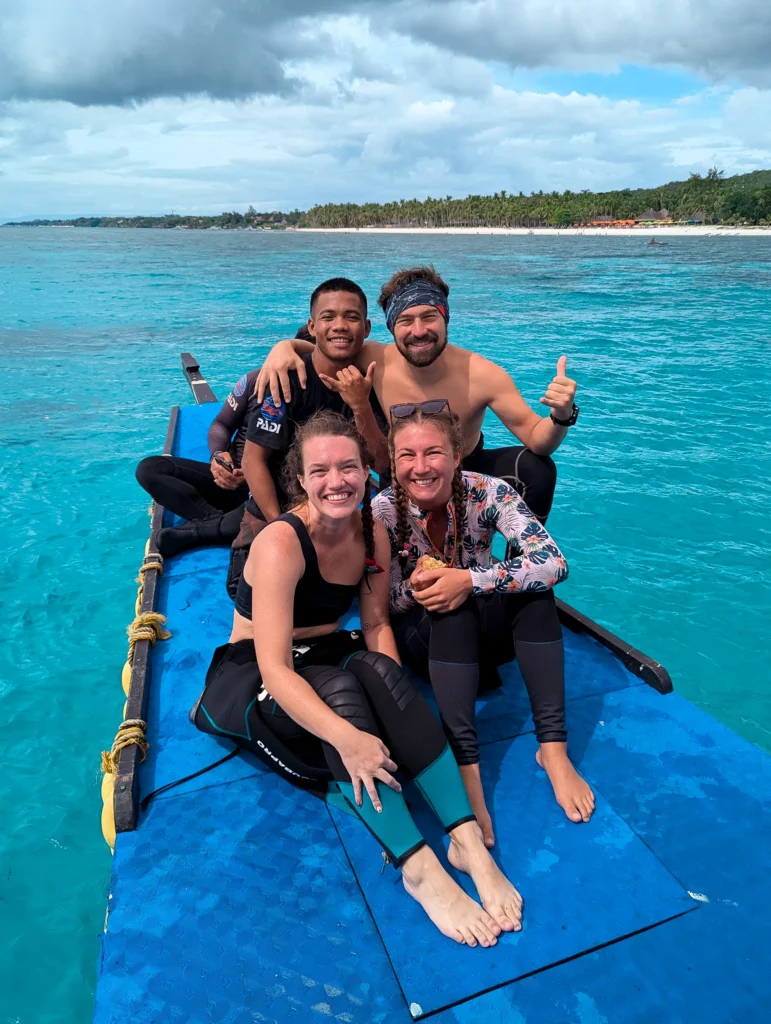
What dive shop to choose when diving in Panglao
Then there’s the question of who you should dive with! Unlike in destinations like Siquijor, every dive shop in Panglao had a boat that would take you to Balicasag and Pamilican. If you’d like a recommendation, we dove with Haka Dive Center.
Overall we chose them because they had good reviews, I really like their equipment and they offered a good diving package to do 10 dives (including Balicasag and Pamilican). The other dive centers we spoke to were Bohol Divers Club and Big Blue Bohol.
What we like about Haka:
- They had some really amazing dive guides. We especially loved diving with Jim and Glen. Both of them were very safe, attentive and careful around the coral and marine life.
- We also like the Haka Dive boat, it was comfortable for long journeys!
- They served a nice vegetarian lunch for the longer dive days
Some things that could be better:
- Some of the guides use poking sticks to interact with the wildlife (i.e. poking sea anemones)
- We saw other customers grabbing and breaking coral (I would prefer the guides or shop to be stricter about this)
- There were times when we saw boat crew wash trash off the boat and into the sea
My top recommendation for picking a dive shop is to read the reviews carefully and then if possible, go and speak to the dive center before booking your first dives. Ask them about their safety standards, dive sites, guide and ask to see their equipment. I always think that you can get a pretty good impression of a dive center by speaking to them in person.
And if you want to dive with dive centers that share your values to take care of the sea – make sure to look for Green Fins recommendations.
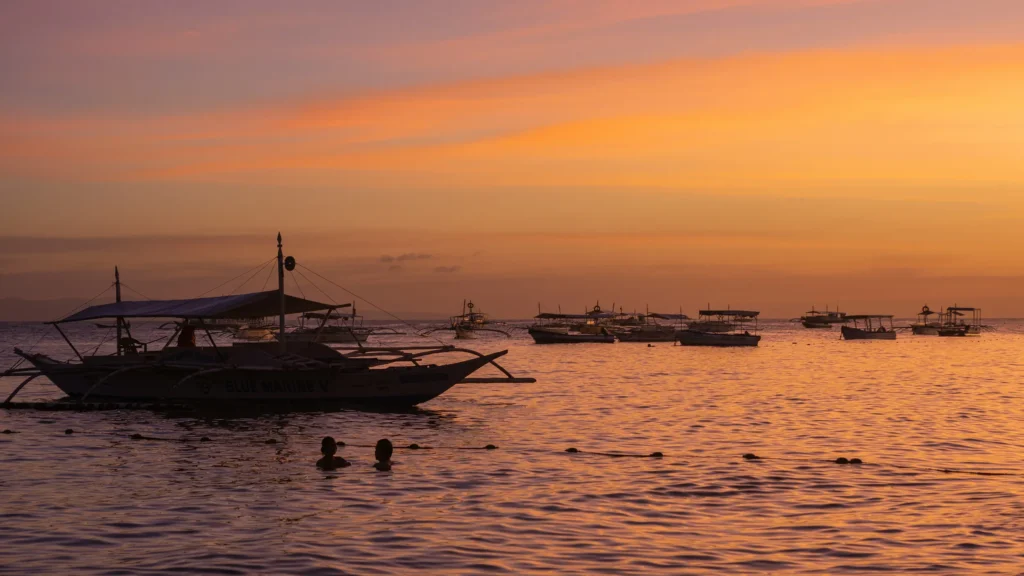
How much is diving in Panglao
Honestly, we try not to pick dive centers based on their prices. We’ve done that in the past and haven’t always had a great experience. As safe as diving is, there are still risks involved and I don’t think that you should cut corners on the cost.
That being said, Haka (and many dive centers in Panglao) offered a package for multiple dives. I paid ₱17,600 for 11 dives with Haka, making each dive ₱1,600. My husband has all his own gear, so he only paid ₱1,500 per dive.
For local Panglao dive sites, you’ll pay ₱3,500 for two dives. And if you want to do a trip to Balicasag or Pamilican, you’ll pay ₱6,000 for 3 dives and lunch.
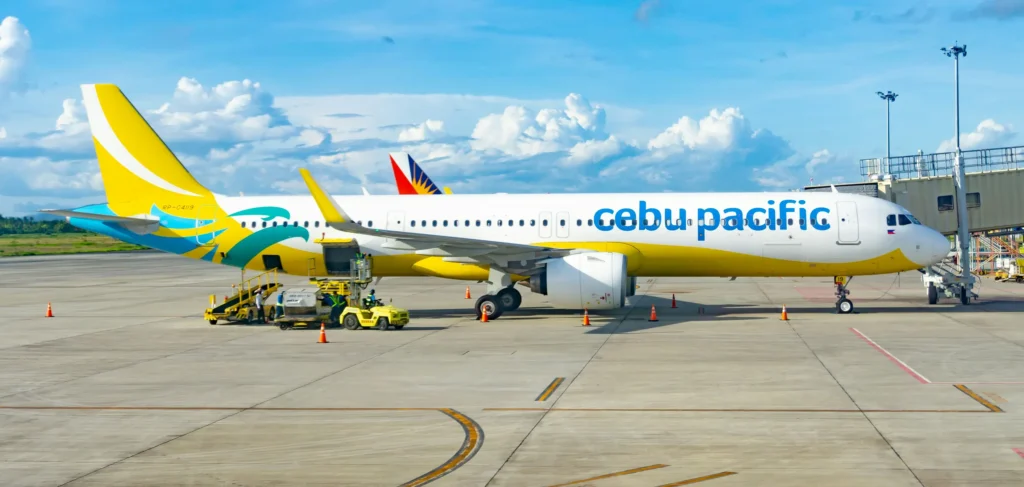
How to get to Panglao
Getting to Panglao is the easiest of any of the destinations that we visited in the Philippines.
You can fly directly to Panglao-Bohol international airport and then take a taxi or tricycle to your hotel. It only takes about 15 minutes to get from the airport to Alona Beach.
Or you can take a ferry to Tagbilaran City Port. Taking the ferry is a good option if you’re flying in and out of Cebu. From Tagbilaran you can take a taxi to Panglao, this will take around 40 minutes.
Where to stay in Panglao
Alona Beach is the main ‘hub’ of Panglao. However – it is very busy. For our first few days we stayed about 20 minutes away from Alona Beach (thinking we didn’t want to be close to the chaos). However, for the second half of our stay, we opted for something closer to the action for better food options and ease of getting around.
After staying in a few different places, I highly recommend you stay close to Alona Beach, but far enough away that it’s not as loud and busy.
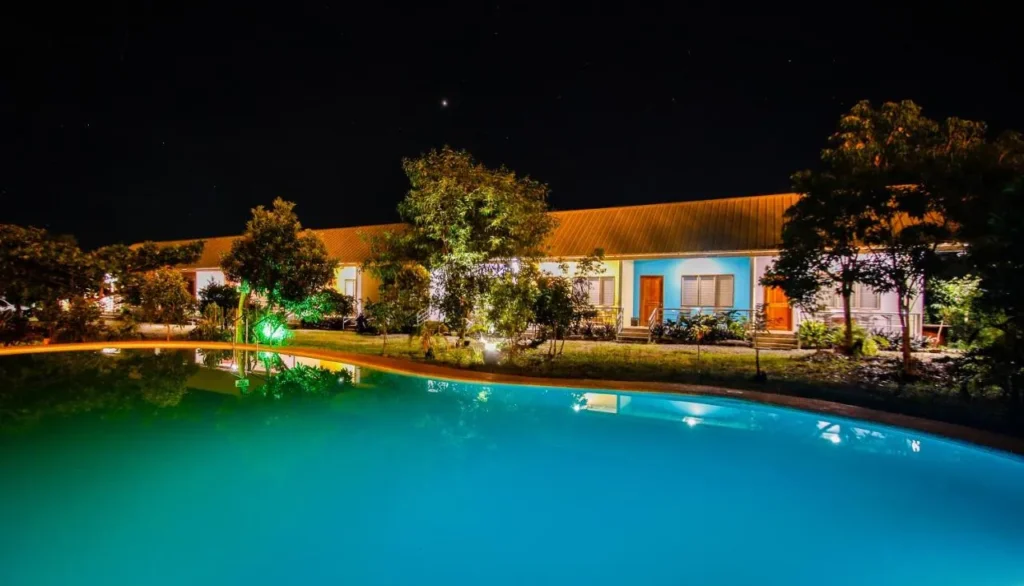
Photo courtesy of Ana-As Apartelle via Booking.com
Where I stayed: Ana-As Apartelle (8.0⭐️)
This is the hotel we stayed at for the second-half of our stay. I highly recommend Ana-As! They have huge rooms with AC and fans, comfortable beds, hot water and a huge pool. There is also a shared kitchen where you can save money by cooking your own meals.
The receptionist Abby made us feel right at home, and she was able to offer us a discount on a longer stay. They don’t have the best reviews on Booking – which is something I don’t understand at all! We found them on Google and they were fantastic.
However, there are plenty of accommodation options available in Panglao. Here are some others I recommend for your visit.
Other Great Accommodations in Panglao
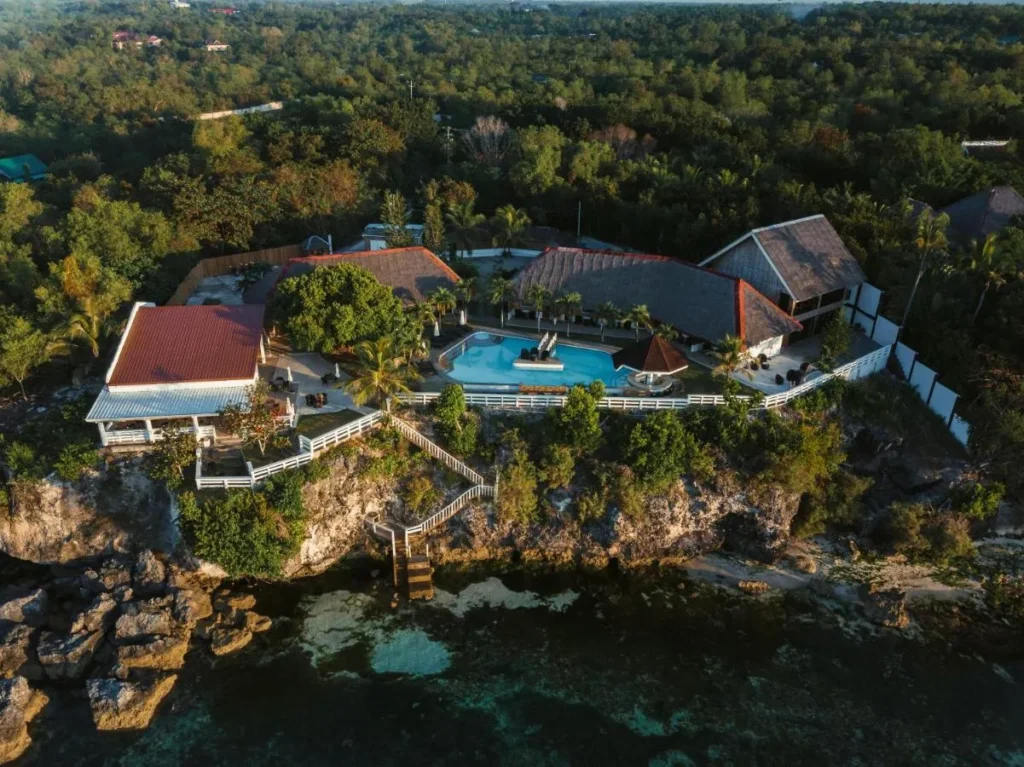
Photo courtesy of Cliffside Resort via Booking.com
Most Unique Hotel: Cliffside Resort (8.2⭐️)
Tucked away from the hustle and bustle of Alona Beach is this gorgeous resort with the best views around Panglao. One of the only hotels in Panglao with ocean view suites, this hotel is on the top of my bucket list for our next trip! They’re close enough to the action – without the chaos and noise of being right on Alona Beach.
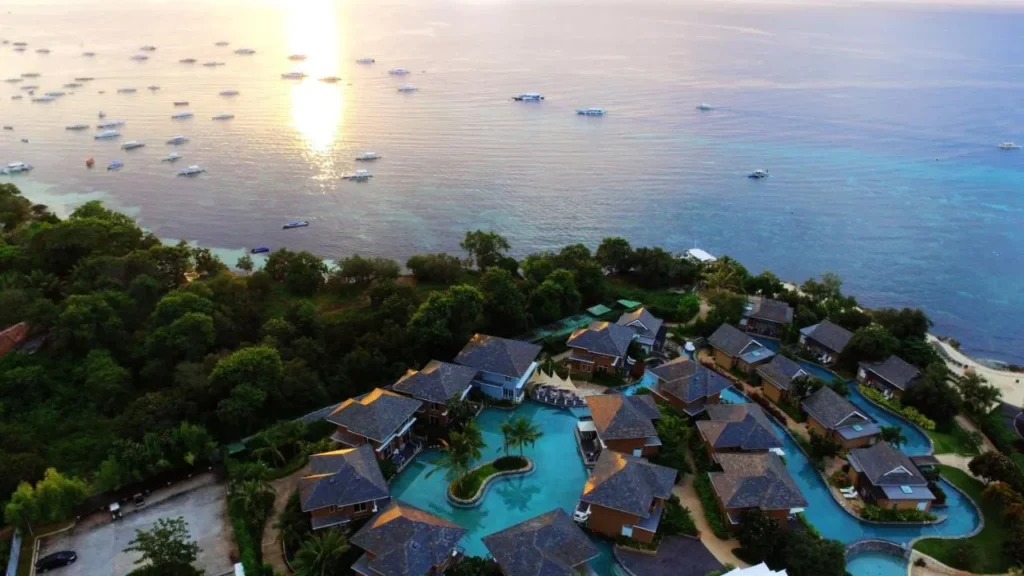
Photo courtesy of BE Grand Resort via Booking.com
Best Hotel with a Pool: BE Grand Resort (8.4⭐️)
Less than a kilometer from Alona Beach is the BE Grand Resort. This hotel’s pool is gorgeous and snakes throughout the property – making many of the rooms pool front! And if the pool isn’t enough to keep you busy, this hotel also features a private beach and free kayaks. Make sure to book one of their villas!
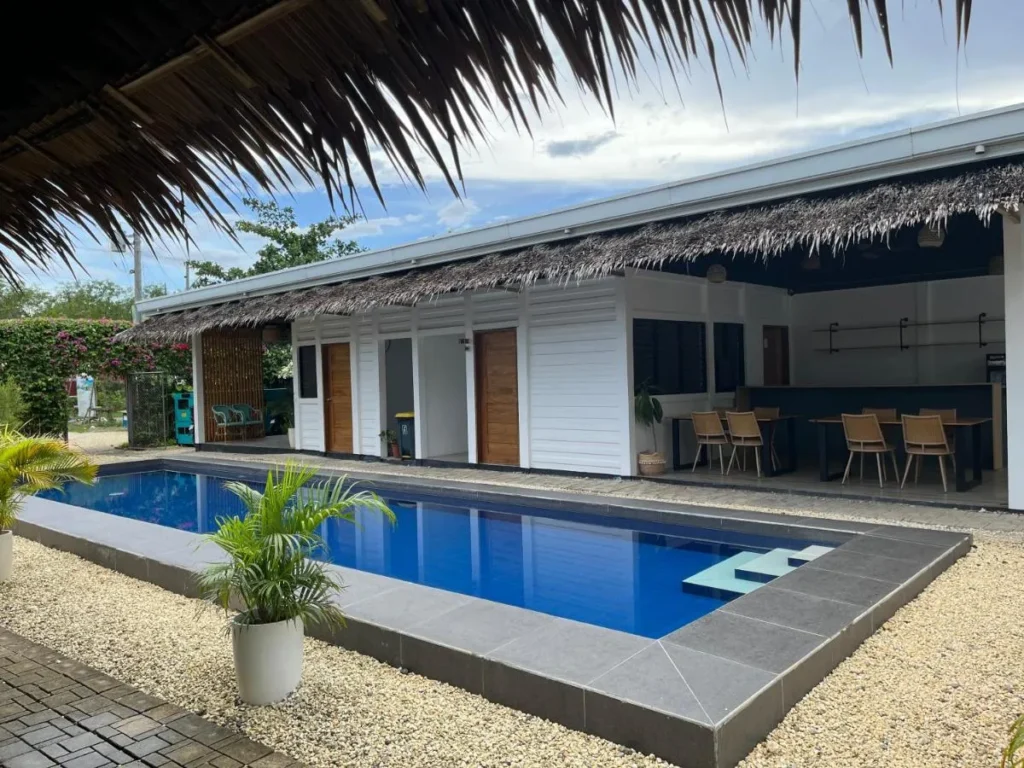
Photo courtesy of Alona M Panglao Hotel via Booking.com
Top Budget Hotel in Panglao: Alona M Panglao (8.9 ⭐️)
Alona M is located just around the corner from Ana-As, a location we found perfect for our stay. All of their rooms are modern, clean and surround their swimming pool. You can walk to Alona Beach or rent a scooter to get around easily. They’re also close to restaurants and bars.
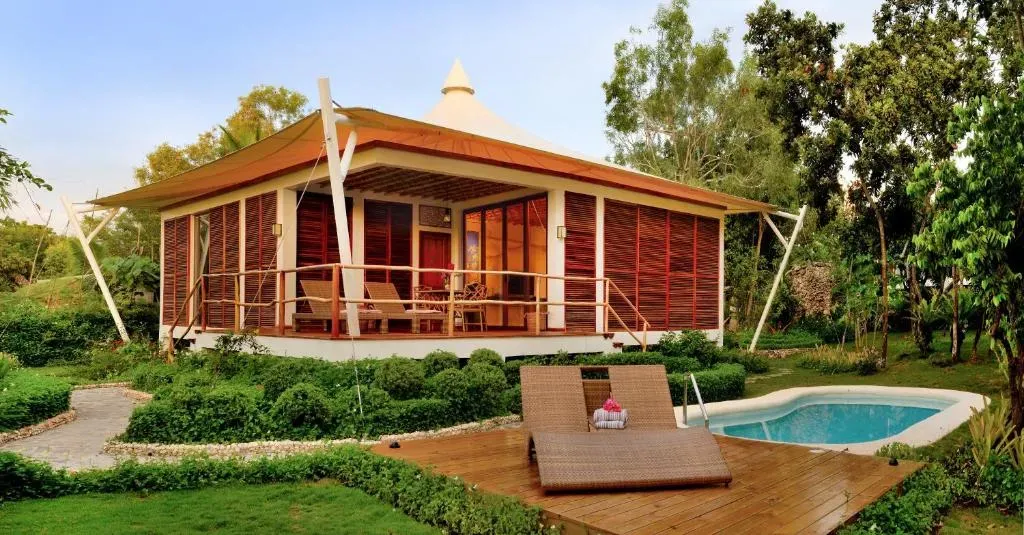
Photo courtesy of Donatela Resort & Sanctuary Hotel via Booking.com
Top Luxury Hotel in Panglao: Donatela Resort and Sanctuary (9.1 ⭐️)
Donatela is further away from Alona Beach, but with that distance you get incredible luxury set in a lush jungle! I recommend booking one of their pool villas, it will be one of the most beautiful places you ever stay. The property has an incredible spa, and their staff will help you book any activities that you’d like to try.
Book a Room in Panglao
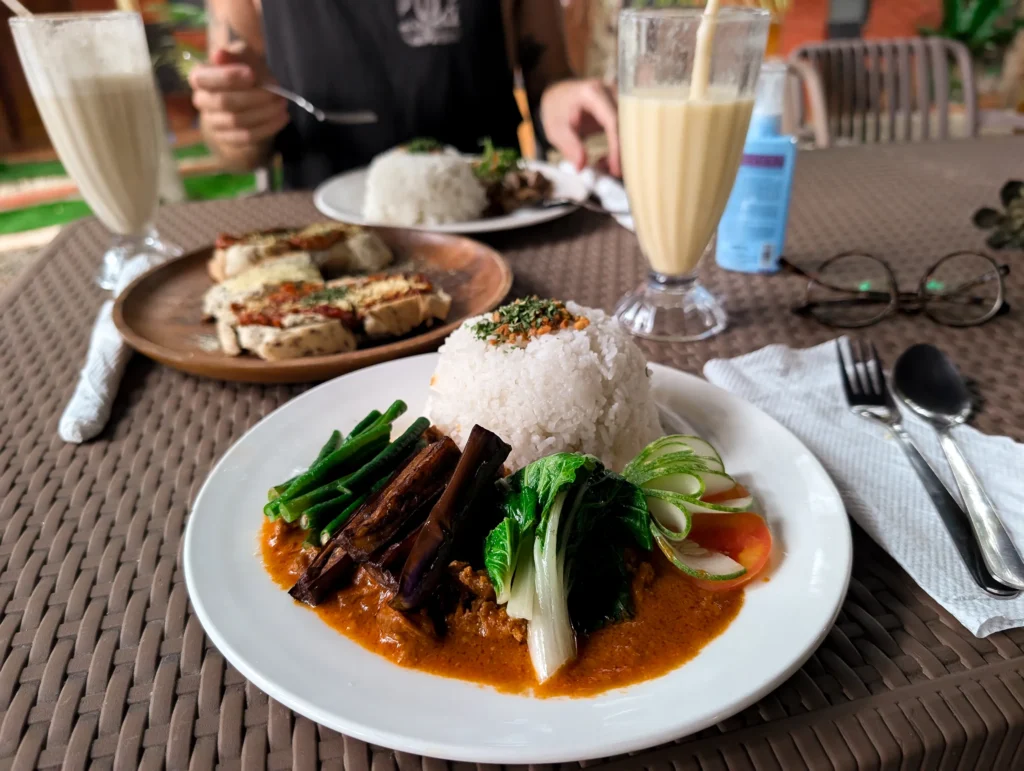
Travel tips for Panglao
We spent 2.5 months traveling around the Philippines, and Panglao was the ‘easiest’ destination we visited. If you’ve visited the Philippines, you’ll likely know what I mean. Around Panglao you’ll be able to get anything you need – there is an immigration office for visa extensions, medical facilities and a hyperbaric chamber.
The Philippines is a cash only destination – and a lot of the dive centers will charge you an additional fee of 5% to pay with a credit card. This ATM would let us take out ₱20,000 at a time, otherwise know that most ATMs in the Philippines will only let you take out ₱10,000 (about $175).
Eating vegetarian in the Philippines is not easy. Most traditional and local restaurants do not serve anything vegetarian. That being said, Panglao has some amazing vegetarian and vegan restaurants that we genuinely missed during the rest of our trip. Make sure to eat at Vedgebohol, The Vegan Shack and Luna Rossa. You will need a scooter to get to Vedgebohol and The Vegan Shack. Bamboo Place in Alona Beach also has nice vegetarian options.
I recommend renting a scooter only if you feel comfortable driving one. While most of the roads were quiet, the intersection around Jollibee’s in Alona Beach can be very overwhelming.
As always, make sure you are traveling with proper travel insurance.
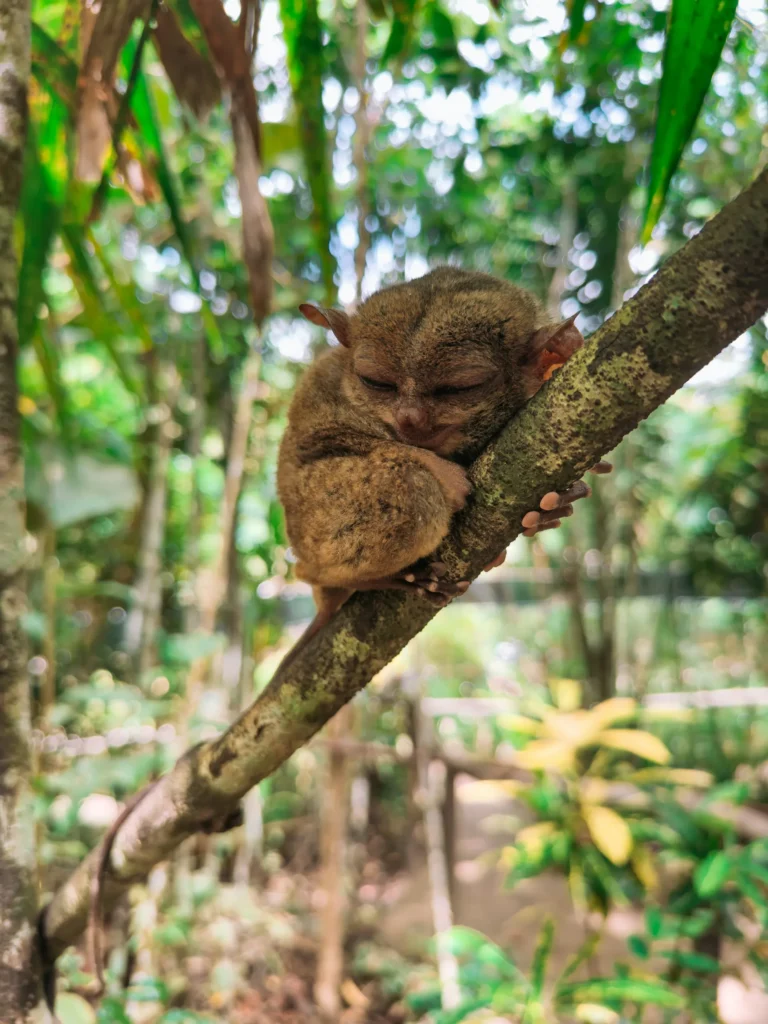
Other things to do in Panglao and Bohol
We often travel to islands where there is nothing to do but diving – however that is not the case with Panglao and Bohol. There are plenty of things to do around the island for divers and nondivers alike.
One day during your trip you should take a day trip to see the Tarsiers, Chocolate Hills and waterfalls of Bohol. There are plenty of day trip options that you can book with GetYourGuide (my go-to for any tours!) Even if you feel comfortable on a scooter, I don’t recommend doing a trip on your own. It’s a very long way and with unpredictable weather, you’ll definitely be more comfortable in a car.
You can also snorkel with the sardines at Napaling Reef, but please make sure to check reviews on your own. We decided not to visit this area because of overtourism and reviews from other travelers saying the area was getting destroyed.
Lastly, take a trip up to Anda Beach. This is one thing we wished we would have done during our stay in Panglao! Anda Beach has come highly recommended as a day trip and diving destination. If we were to go back again, this is definitely where we would spend a portion of our trip.
Book your Panglao day trips
Traveling Southeast Asia?
- How to Spend 48 Hours in Bangkok
- The Ultimate 10-Day Cambodia Itinerary
- Island Hopping in the Gulf of Thailand
- Digital Nomad Guide to Koh Tao
- How to Spend 48 Hours in Phnom Penh
I hope this guide helps you feel ready to plan your trip and go diving in Panglao!
Love this travel guide? Much like a cup of coffee, I pour my heart and soul into each post! Say thank you by buying me a cup of coffee. Support this blog and keep it ad-free.
If you want to see where in the world I am, make sure to follow me on Instagram and TikTok.
